Table of Contents
- 1. Methods for Repairing Broken Metal Without Welding
- 2. Considerations Before Repairing Metal
- 3. Adhesive Bonding Techniques
- 4. Cold Welding Alternatives
- 5. Mechanical Fastening Options
- 6. Benefits and Limitations of Each Method
- 7. Step-by-Step Guide for Repairing Broken Metal
- 8. Safety Measures When Repairing Metal
- 9. Common Mistakes to Avoid When Repairing Metal Without Welding
- 10. Success Stories and Case Studies in Repairing Metal Without Welding
- 11. Future Trends in Metal Repair Technology
- 12. Conclusion: Embracing Innovation in Metal Repair
- FAQs: about Can I repair broken metal without welding
Repairing broken metal without welding has emerged as a necessity in situations where traditional welding methods are either impractical or unavailable. From adhesive bonding techniques to innovative cold welding alternatives and mechanical fastening options, a spectrum of methods exists to restore metal integrity without the need for intense heat or welding equipment.
In this comprehensive guide, we’ll explore diverse techniques, their benefits, and limitations, providing you with a roadmap to effectively mend broken metal. Whether you’re dealing with minor fractures or major structural damage, these alternative methods offer viable solutions. Join us on this journey to discover the versatility and efficacy of repairing metal without welding.
1. Methods for Repairing Broken Metal Without Welding
When traditional welding methods are either inaccessible or not feasible, several alternative techniques prove effective in repairing broken metal. These methods offer innovative approaches, ensuring the restoration of metal integrity without the necessity of welding equipment or high-temperature applications.
1. Adhesive Bonding Techniques
Adhesive bonding stands as a prominent method for repairing broken metal. It involves the use of various adhesives to create strong bonds between fractured or damaged metal surfaces.
- Epoxy Adhesives
Epoxy adhesives are renowned for their exceptional bonding properties. Comprising two components—resin and hardener—epoxy forms a robust bond when mixed. This adhesive is widely used due to its strength, resistance to chemicals, and versatility in bonding different metal surfaces.
- Cyanoacrylate Adhesives
Commonly known as super glue, cyanoacrylate adhesives excel in bonding metal surfaces quickly. Their fast-curing nature and strong adhesive properties make them suitable for minor metal repairs. However, their ability to fill larger gaps might be limited compared to epoxy adhesives.
- Polyurethane Adhesives
Polyurethane adhesives are flexible and durable, making them ideal for metal repairs subjected to movement or vibration. They provide strong adhesion and can withstand varying temperatures, making them suitable for diverse metal types and repair scenarios.
2. Cold Welding Alternatives
Cold welding methods offer effective solutions for repairing metal without the need for extreme heat commonly associated with traditional welding.
- Metal Stitching
Metal stitching involves drilling holes at regular intervals along the fracture line and installing metal stitching pins or locks to hold the broken pieces together. This method is effective for restoring structural integrity in cast iron, steel, or aluminum components.
- Brazing
Brazing uses a filler material, often a brass or copper alloy, heated to a melting point lower than that of the base metal. The molten filler material flows into the joint, creating a strong bond without melting the base metal. It’s suitable for joining different metals or repairing intricate metal parts.
- Soldering
Similar to brazing but performed at lower temperatures, soldering uses a filler material with a lower melting point to join metal surfaces. It’s useful for delicate repairs and electronic components but might not be suitable for heavy-duty or high-temperature applications.
3. Mechanical Fastening Options
Mechanical fastening methods offer reliable alternatives to welding, ensuring stable repairs without relying on adhesives or heat.
- Riveting
Riveting involves securing metal pieces together by driving a rivet through pre-drilled holes and deforming the end to create a permanent connection. This method provides robust and long-lasting repairs, commonly used in structural applications.
- Bolting
Using bolts and nuts to fasten broken metal parts is a straightforward and sturdy method. It allows for disassembly, making it suitable for repairs requiring occasional maintenance or adjustments.
- Clamping
Clamping involves using pressure or force to hold broken metal parts together until a permanent repair solution is implemented. While temporary, clamping can be an effective immediate fix in emergency situations.
These methods offer a spectrum of options for repairing broken metal without welding, providing versatility and efficiency in addressing various degrees of damage across different types of metals. Each technique has its advantages and limitations, allowing individuals to choose the most suitable method based on the specific repair needs.
2. Considerations Before Repairing Metal
Before diving into the repair process, several crucial considerations must be taken into account to ensure the effectiveness and success of the repair without welding.
- Assessing the Damage
Understanding the extent and nature of the damage is paramount. Whether it’s a minor crack or a substantial break, assessing the damage helps in choosing the most suitable repair method. Examining the type of metal, location, and severity of the damage guides the decision-making process.
- Material Compatibility
Different metals require different repair approaches. Ensuring that the repair method aligns with the specific metal’s properties and characteristics is crucial for a successful outcome. Factors such as corrosion resistance, hardness, and thermal conductivity play a pivotal role in selecting the appropriate repair technique.
- Environmental Factors
The environment in which the repair will take place significantly influences the choice of method. Considerations such as temperature, humidity, and exposure to elements must be accounted for. Some repair techniques may be affected by extreme temperatures or moisture, impacting their effectiveness.
- Accessibility
Accessibility to the damaged area is vital. The ease of reaching and maneuvering around the broken metal dictates the feasibility of certain repair methods. Intricate or confined spaces may limit the applicability of specific techniques, influencing the choice of repair method.
- Time Constraints
Considering the urgency and time available for repair is essential. Some methods might require longer curing or setting times, while others offer quicker solutions. Assessing time constraints helps in choosing a method that aligns with the required repair duration.
- Cost Analysis
Understanding the costs involved in different repair methods is crucial. While some techniques might seem economical initially, factoring in long-term durability and effectiveness is essential. Balancing upfront costs with the longevity and reliability of the repair is key in making an informed decision.
- Safety Precautions
Prioritizing safety during the repair process cannot be overstated. Each method carries its own set of safety considerations, including handling chemicals, using tools, or working in specific environments. Ensuring the appropriate safety measures are in place minimizes risks during the repair.
Considering these aspects before embarking on the repair process enhances the chances of a successful outcome. Each consideration plays a vital role in determining the most suitable method for repairing broken metal without welding. Taking the time to evaluate these factors ensures a more efficient and effective repair process.
3. Adhesive Bonding Techniques
Adhesive bonding techniques offer a versatile and efficient method for repairing broken metal without the need for welding. These techniques rely on various adhesives to create strong bonds between fractured metal surfaces.
- Epoxy Adhesives
Epoxy adhesives are renowned for their exceptional bonding properties and versatility. Comprising a resin and a hardener, epoxy forms a powerful bond when mixed together. This adhesive works effectively on various metal surfaces, offering high strength, resistance to chemicals, and durability. It’s particularly useful for repairs requiring a robust, long-lasting bond.
- Cyanoacrylate Adhesives
Commonly known as super glue, cyanoacrylate adhesives are popular for their fast-curing nature and strong bonding capabilities. They work well for minor metal repairs due to their quick adhesion. However, their ability to fill larger gaps might be limited compared to other adhesives like epoxy.
- Polyurethane Adhesives
Polyurethane adhesives offer flexibility and durability, making them suitable for metal repairs subjected to movement or vibration. They create strong bonds across different metal types and can withstand varying temperatures. Their ability to adapt to different environmental conditions makes them versatile for diverse repair scenarios.
Application Techniques
Applying adhesive bonding techniques involves meticulous preparation and application.
- Surface Preparation: Properly cleaning and roughening the metal surfaces to be bonded ensures better adhesion. Removing contaminants like grease or rust is crucial for the effectiveness of the adhesive.
- Adhesive Application: Applying the adhesive evenly on the prepared surfaces and following the manufacturer’s guidelines regarding quantity and curing time is essential. Properly aligning and clamping the broken pieces together while the adhesive sets ensures a strong bond.
Considerations
While adhesive bonding techniques offer several advantages, there are considerations to bear in mind:
- Curing Time: Adhesives have specific curing times, and allowing adequate time for the bond to set is crucial for optimal strength.
- Gap Filling: Some adhesives might not fill larger gaps effectively, requiring precise alignment of broken pieces.
- Surface Condition: The cleanliness and roughness of the metal surfaces significantly impact the adhesive’s effectiveness.
Adhesive bonding techniques provide an efficient and practical means of repairing broken metal. Choosing the right adhesive based on the type of metal, the severity of damage, and the environmental conditions ensures a successful and durable repair without welding.
4. Cold Welding Alternatives
Cold welding methods offer effective solutions for repairing broken metal without the need for the extreme heat associated with traditional welding techniques. These methods provide sturdy repairs by utilizing various approaches that don’t involve high temperatures.
- Metal Stitching
Metal stitching involves a process of drilling holes at regular intervals along the fracture line of the broken metal and installing metal stitching pins or locks. These pins or locks bridge the gap between the broken pieces, holding them together to restore structural integrity. Metal stitching is particularly effective for repairing cast iron, steel, or aluminum components, providing a durable and reliable repair without the need for welding heat.
- Brazing
Brazing is a cold welding technique that involves using a filler material, often a brass or copper alloy, heated to a melting point lower than that of the base metal. The molten filler material flows into the joint, creating a strong bond without melting the base metal. This method is suitable for joining different metals or repairing intricate metal parts, offering a reliable and heat-free alternative to welding.
- Soldering
Similar to brazing but performed at lower temperatures, soldering utilizes a lower melting point filler material to join metal surfaces. It is commonly used for delicate repairs and electronic components. While not suitable for heavy-duty applications, soldering provides a cold welding alternative for intricate repairs without the need for extreme heat.
Application Techniques
Applying cold welding alternatives involves specific techniques:
- Preparation: Cleaning and preparing the surfaces to be joined is essential for effective bonding.
- Temperature Control: Maintaining the correct temperature while applying the filler material is crucial for successful bonding without the need for welding heat.
- Precision: Precise application of the filler material or stitching pins ensures a strong and durable repair.
Considerations
While cold welding alternatives offer efficient solutions, certain considerations need attention:
- Material Compatibility: Ensuring compatibility between the base metal and the filler material is crucial for a strong and durable bond.
- Skill and Precision: These methods often require precision and skill in application, particularly in controlling temperatures and ensuring proper bonding.
Cold welding alternatives provide reliable methods for repairing broken metal without the need for traditional welding heat. Their effectiveness, especially in repairing intricate or delicate metal parts, makes them valuable alternatives for various repair scenarios without compromising on durability or strength.
5. Mechanical Fastening Options
Mechanical fastening methods offer robust alternatives for repairing broken metal without relying on adhesives or welding. These methods ensure stability and durability by securely fastening broken metal parts using various mechanical techniques.
- Riveting
Riveting is a widely used method for joining or repairing metal components. It involves securing broken metal pieces together by driving a rivet through pre-drilled holes in the metal surfaces. The end of the rivet is then deformed to create a permanent connection. This method provides strong and long-lasting repairs, particularly in structural applications where durability is essential.
- Bolting
Using bolts and nuts to fasten broken metal parts is a straightforward yet effective method. It allows for disassembly if necessary, making it suitable for repairs requiring occasional maintenance or adjustments. Bolting offers a sturdy and adjustable solution, ensuring a secure connection between metal pieces.
- Clamping
Clamping involves using pressure or force to hold broken metal parts together temporarily until a more permanent repair solution is implemented. While it is a temporary fix, clamping can be an effective immediate solution in emergency situations. It provides stability and prevents further damage until a more robust repair method can be applied.
Application Techniques
Applying mechanical fastening options requires specific techniques:
- Precision Drilling: Precise and accurate drilling of holes for riveting or bolting ensures proper alignment and a secure connection.
- Proper Tightening: Ensuring proper torque and tightening of bolts or nuts is essential for maintaining a strong and stable connection.
- Secure Clamping: Using appropriate clamps and applying sufficient pressure to hold broken parts together securely until a permanent repair can be undertaken.
Considerations
While mechanical fastening options offer reliable repairs, certain considerations should be taken into account:
- Strength and Stability: Assessing the strength and stability of the fastening method in relation to the repair’s requirements is crucial.
- Disassembly Possibility: Considering whether the repair might require future disassembly for maintenance or modifications.
Mechanical fastening options provide sturdy and reliable alternatives for repairing broken metal without relying on adhesives or welding. Their versatility and strength make them suitable for various repair scenarios, offering durable solutions that can withstand substantial stress and loads.
6. Benefits and Limitations of Each Method
Each method for repairing broken metal without welding offers unique advantages and limitations. Understanding these aspects helps in choosing the most suitable technique based on the specific repair requirements.
1. Adhesive Bonding Techniques
Benefits:
- High Strength: Epoxy adhesives provide exceptional bonding strength, ensuring durable repairs.
- Versatility: Adhesives like polyurethane cater to varying environmental conditions, offering flexibility.
- Quick Application: Cyanoacrylate adhesives cure rapidly, enabling swift repairs for minor damages.
Limitations:
- Curing Time: Some adhesives might require significant curing time, delaying the completion of the repair.
- Gap Filling Capacity: Certain adhesives may not effectively fill larger gaps between broken metal surfaces.
2. Cold Welding Alternatives
Benefits:
- Heat-Free Repair: Metal stitching, brazing, and soldering offer solutions without relying on high welding temperatures.
- Precision: Cold welding methods allow for delicate repairs and intricate metal parts.
- Material Compatibility: They cater to different metal types, providing versatility in repair options.
Limitations:
- Skill Required: Cold welding techniques often demand skill and precision in application, especially in controlling temperatures.
- Material Suitability: Ensuring compatibility between base metal and filler material is crucial for effective bonding.
3. Mechanical Fastening Options
Benefits:
- Strength and Durability: Riveting and bolting provide robust and long-lasting repairs, especially in structural applications.
- Adjustability: Bolting allows for disassembly, facilitating future modifications or maintenance.
- Immediate Solution: Clamping offers a quick and temporary fix in emergency situations, preventing further damage.
Limitations:
- Temporary Fix: Clamping is a temporary solution and may not provide a permanent repair.
- Complexity: Riveting and bolting require precise drilling and proper torque for a secure connection.
Understanding the benefits and limitations of each method is crucial in making an informed decision while repairing broken metal. Factors like the severity of damage, material compatibility, time constraints, and the need for a permanent or temporary solution guide the selection of the most appropriate repair technique.
7. Step-by-Step Guide for Repairing Broken Metal
A comprehensive guide is essential to ensure a successful repair process when dealing with broken metal. Following a structured approach helps in efficiently executing the chosen repair technique.
- Choosing the Right Method
Assessment:
- Evaluate the extent and nature of the damage to determine the most suitable repair technique.
- Consider factors such as material compatibility, environmental conditions, and accessibility.
2. Preparation Steps
Surface Preparation:
- Clean the broken metal surfaces thoroughly, removing any contaminants like grease, rust, or old adhesive residues.
- Roughen the surfaces to be bonded, ensuring better adhesion for adhesive bonding techniques.
3. Application Guidelines
Adhesive Bonding Techniques:
- Mix and apply the chosen adhesive evenly on the prepared surfaces according to the manufacturer’s instructions.
- Align and clamp the broken pieces together securely while the adhesive sets.
Cold Welding Alternatives:
- Follow specific application instructions for metal stitching, brazing, or soldering, ensuring precision and correct temperatures.
- Apply filler material or stitching pins to bridge the gap between broken metal parts effectively.
Mechanical Fastening Options:
- Drill precise holes for riveting or bolting, ensuring proper alignment of broken metal pieces.
- Tighten rivets or bolts securely to create a durable connection.
4. Safety Measures
Protective Gear:
- Wear appropriate safety equipment, including gloves, goggles, and masks, depending on the repair method used.
Ventilation Requirements:
- Ensure proper ventilation, especially when working with adhesives or materials that release fumes.
5. Handling Hazardous Materials
Proper Disposal:
- Dispose of used adhesive containers, leftover filler materials, or any hazardous substances following environmental guidelines.
6. Completion Check
Inspection:
- Inspect the repaired metal thoroughly to ensure the repair’s effectiveness and structural integrity.
Testing:
- Conduct necessary tests or stress checks, depending on the repaired metal’s function or load-bearing requirements.
Following these step-by-step guidelines ensures a systematic and efficient repair process for broken metal. Adhering to safety measures, proper preparation, precise application, and thorough inspection are key aspects to consider throughout the repair procedure, ensuring a successful outcome.
8. Safety Measures When Repairing Metal
Ensuring safety during the metal repair process is paramount to prevent accidents, protect against potential hazards, and maintain a secure working environment. Adhering to safety protocols minimizes risks and ensures a smooth and secure repair process.
1. Protective Gear
Personal Protective Equipment (PPE):
- Gloves: Wear appropriate gloves to protect hands from sharp edges, chemicals, or hot surfaces.
- Goggles: Use safety goggles to shield eyes from debris, splashes, or harmful fumes.
- Masks/Respirators: Depending on the repair method, use masks or respirators to prevent inhalation of hazardous fumes or dust particles.
2. Ventilation Requirements
Adequate Ventilation:
- Work in well-ventilated areas to disperse fumes or airborne particles generated during the repair process.
- Use exhaust fans or open windows to ensure proper airflow, especially when working with adhesives or materials emitting fumes.
3. Handling Hazardous Materials
Proper Handling and Disposal:
- Follow manufacturer guidelines when handling adhesives, solvents, or any chemicals used in the repair.
- Dispose of hazardous materials properly, adhering to local regulations for safe and eco-friendly disposal.
4. Handling Tools and Equipment
Tool Safety:
- Use tools and equipment correctly and maintain them in good condition to prevent accidents or malfunction.
- Be cautious with sharp tools or equipment to avoid injuries while handling or using them during repairs.
5. Fire Safety Precautions
Fire Hazards:
- Keep fire extinguishers nearby in case of emergencies, especially when working with flammable materials or in areas prone to sparks.
- Maintain a fire-safe work environment by removing any combustible materials from the repair area.
6. Handling Electrical Components
Electrical Safety:
- Ensure power sources are turned off when working on electrical components to prevent electrical shocks or accidents.
- Use insulated tools and follow electrical safety guidelines when repairing metal components involving electricity.
7. Emergency Response Plan
Emergency Procedures:
- Establish and communicate emergency response protocols to all involved in the repair process.
- Be prepared to address injuries, spills, or unforeseen incidents promptly and efficiently.
9. Common Mistakes to Avoid When Repairing Metal Without Welding
While repairing metal without welding offers efficient solutions, certain common mistakes can hinder the effectiveness of the repair process. Being aware of these pitfalls helps in executing a successful repair without encountering avoidable setbacks.
1. Incorrect Material Selection
Mistake:
- Using Incompatible Materials: Selecting adhesives, filler materials, or fasteners that are incompatible with the base metal can compromise the bonding or connection strength.
Solution:
- Material Compatibility Testing: Ensure compatibility between repair materials and the metal being repaired by conducting compatibility tests or consulting material compatibility charts.
2. Inadequate Surface Preparation
Mistake:
- Neglecting Surface Cleaning: Failing to clean and prepare the metal surfaces properly before bonding or fastening can hinder the effectiveness of the repair.
Solution:
- Thorough Surface Cleaning: Prioritize cleaning and roughening the surfaces to be bonded or fastened to ensure better adhesion and a stronger bond.
3. Skipping Proper Curing Times
Mistake:
- Rushing the Curing Process: Not allowing sufficient time for adhesives or filler materials to cure properly can weaken the bond or connection.
Solution:
- Adhere to Manufacturer Instructions: Follow the manufacturer’s recommended curing times meticulously to ensure the repair reaches its full strength.
4. Improper Application Techniques
Mistake:
- Incorrect Application: Applying adhesives, filler materials, or fasteners incorrectly can result in weak bonds or connections.
Solution:
- Follow Application Guidelines: Abide by the recommended application techniques provided by manufacturers for each repair method to achieve optimal results.
5. Neglecting Safety Precautions
Mistake:
- Ignoring Safety Measures: Neglecting to use proper protective gear or disregarding safety protocols can lead to accidents or health hazards.
Solution:
- Prioritize Safety: Always use appropriate personal protective equipment and adhere to safety guidelines to ensure a secure and risk-free repair process.
10. Success Stories and Case Studies in Repairing Metal Without Welding
Real-life examples and case studies showcase the effectiveness and versatility of repairing metal without welding. These success stories highlight challenges faced, innovative solutions employed, and the outcomes achieved through various non-welding repair methods.
1. Restoring Historical Artifacts
Case Study:
- Challenge: Repairing intricate metal sculptures and historical artifacts without altering their original structure.
- Solution: Utilizing adhesive bonding techniques and cold welding methods to mend delicate metal components.
- Outcome: Successful restoration of historical pieces, preserving their integrity without compromising their originality.
2. Automotive Component Repairs
Case Study:
- Challenge: Repairing damaged automotive components without affecting their structural integrity.
- Solution: Implementing mechanical fastening options like riveting and bolting for securing broken metal parts.
- Outcome: Durable repairs achieved, ensuring safe and functional automotive components without welding.
3. Industrial Equipment Maintenance
Case Study:
- Challenge: Conducting maintenance and repairs on heavy industrial equipment in operational environments.
- Solution: Employing cold welding alternatives like metal stitching and brazing for on-site repairs.
- Outcome: Efficient repairs completed, minimizing downtime and ensuring continued operational efficiency.
4. Artisanal Metalwork Restoration
Case Study:
- Challenge: Restoring intricate metalwork in artisanal crafts without altering their aesthetic appeal.
- Solution: Utilizing adhesive bonding techniques to repair broken metal components seamlessly.
- Outcome: Successful restoration achieved, preserving the artistry and functionality of the metalwork.
5. Structural Repairs in Construction
Case Study:
- Challenge: Conducting structural repairs in buildings without disrupting ongoing construction.
- Solution: Implementing mechanical fastening options like clamping for temporary fixes until welding could be performed.
- Outcome: Immediate stabilization achieved, allowing construction to proceed while ensuring safety and structural integrity.
11. Future Trends in Metal Repair Technology
Advancements in Non-Welding Techniques
1. Enhanced Cold Welding Methods
Precision Control:
Advancements aim to improve precision in temperature control for cold welding techniques like brazing and soldering. This ensures more accurate application, minimizing heat-related damage to delicate metals.
Automated Systems:
Integration of automated systems and robotics in cold welding processes enhances accuracy and consistency, especially in intricate repairs or assembly lines, reducing human error.
2. Evolution of Mechanical Fastening
Smart Fastening Solutions:
Innovations focus on smart fastening technologies that offer adjustable and adaptable connections. These smart fasteners can sense structural stress and adjust tension accordingly, optimizing repairs.
3D Printing for Fasteners:
Exploration into 3D printing technologies for custom fasteners enables on-demand creation of specialized fastening components tailored to unique repair requirements.
Innovations in Materials and Adhesives
Advanced Adhesive Solutions
Nano-Adhesives:
Development of nano-adhesives with superior bonding properties offers stronger and more resilient bonds, even in extreme conditions, contributing to more durable repairs.
Eco-Friendly Adhesives:
Researchers are actively pursuing environmentally sustainable adhesive formulations made from renewable sources, reducing environmental impact without compromising performance.
Cutting-Edge Filler Materials
Self-Healing Fillers:
Innovative filler materials with self-healing capabilities are being researched, allowing repairs to adapt and mend minor damages over time, prolonging the repair’s lifespan.
Multi-Substrate Compatibility:
Advancements focus on filler materials compatible with multiple metal substrates, simplifying repairs involving dissimilar metals or alloys without compromising bond strength.
12. Conclusion: Embracing Innovation in Metal Repair
In conclusion, the methods for repairing broken metal without welding offer diverse and effective solutions for a wide range of scenarios. From adhesive bonding techniques to cold welding alternatives and mechanical fastening options, each method presents unique advantages, addressing specific repair needs efficiently.
Recap of Key Points
Versatility:
- These methods cater to various metal types, offering versatile solutions for different repair requirements.
Strength and Durability:
- Adhesive bonding, cold welding, and mechanical fastening provide strong and long-lasting repairs, ensuring structural integrity.
Considerations:
- Factors like material compatibility, environmental conditions, and safety precautions play pivotal roles in the repair process.
Future Trends and Innovations
Advanced Materials:
- Continuous advancements in adhesive technologies and filler materials may lead to stronger, more resilient bonding options.
Automation and Robotics:
- The integration of automation and robotics in repair processes could streamline and enhance precision in non-welding repair methods.
Eco-friendly Solutions:
- The development of environmentally sustainable adhesives and filler materials aligning with green initiatives may shape future repair practices.
The Road Ahead
The future of metal repair without welding appears promising, with ongoing advancements and innovative approaches paving the way for more efficient, durable, and eco-friendly solutions. As industries evolve, embracing these non-welding repair methods not only ensures effective repairs but also contributes to resource conservation and operational efficiency.
video by Ideal Skills
FAQs: about Can I repair broken metal without welding

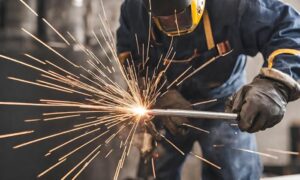
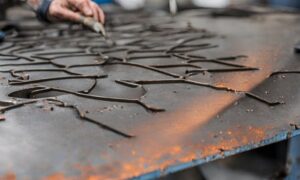
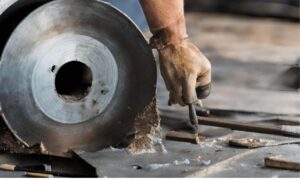

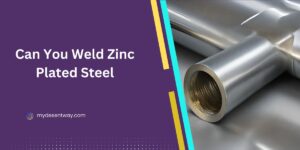

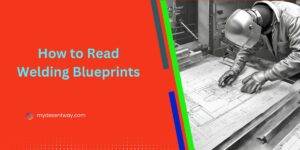
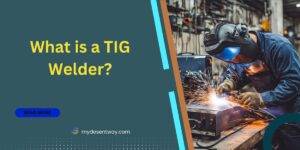



3 thoughts on “Repairing Broken Metal Without Welding”